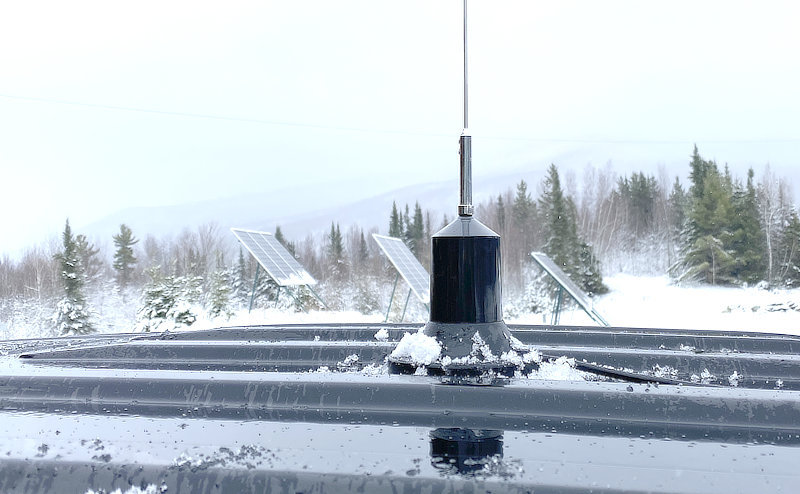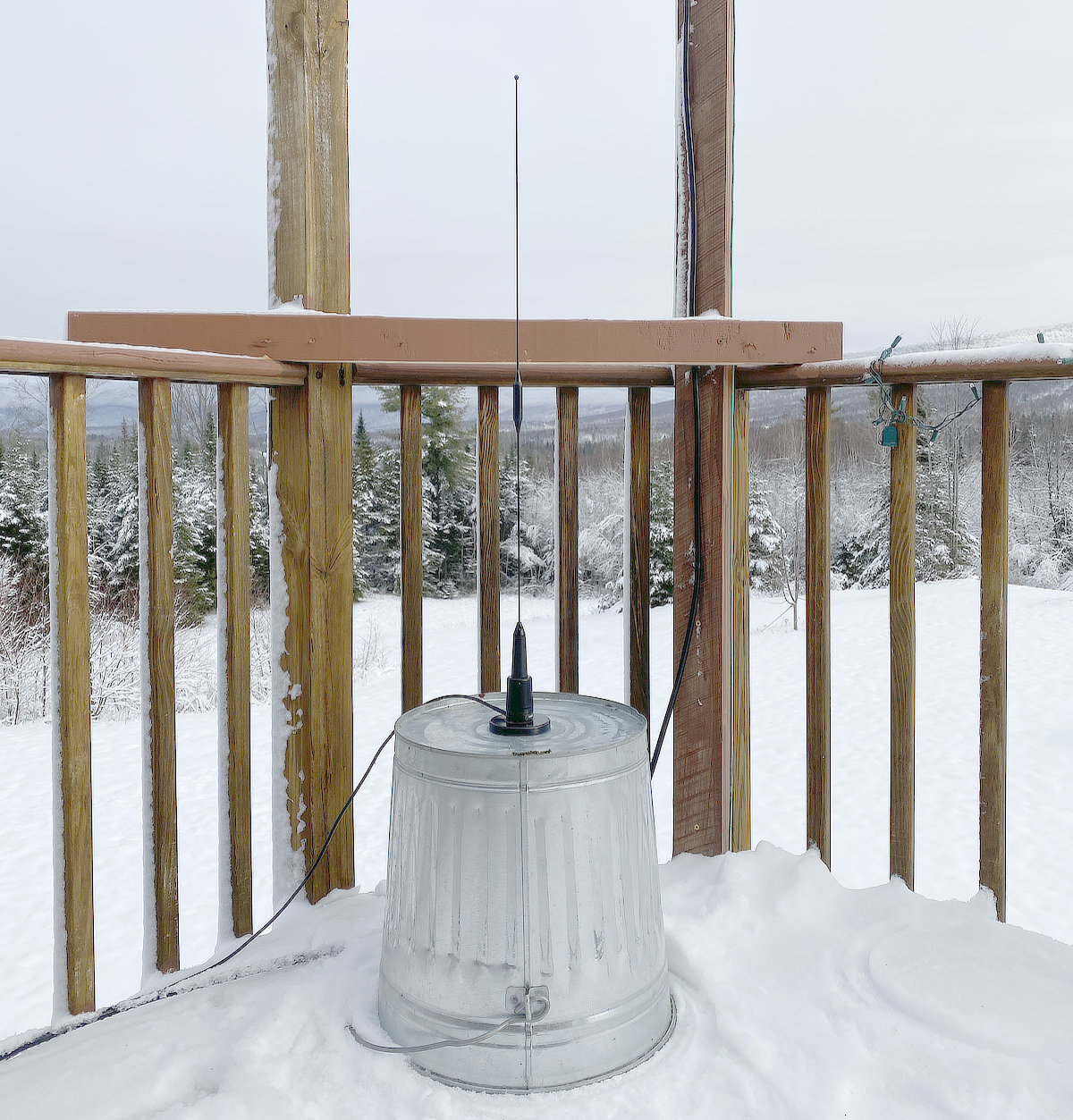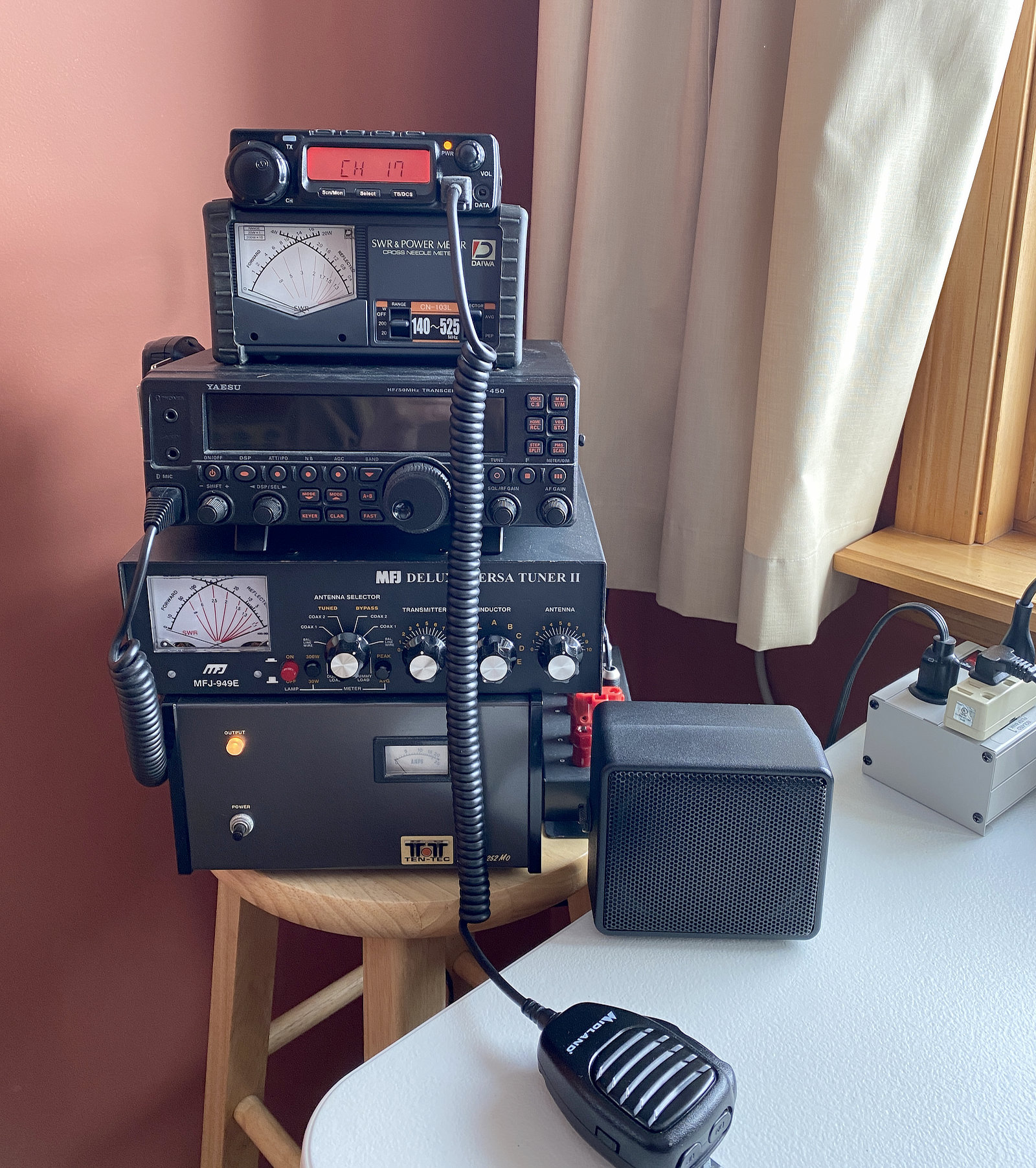Minimum Ground Plane Size For Magnet Mount Antenna

I have several mag-mount antennas that I use on my truck. I may use one or another during road trips – depending on what radio I’m listening on. But what if you wanted to use one of these antennas at home – as opposed to not mounted on your vehicle? Would it work well enough? Yes, provided you come up with the right size ground plane to plop it on…
Note: Some mobile antennas don’t require a ground plane. Check the specs of your particular antenna.
Though Ham operators may cringe at the following admission, and although this article is focused on my GMRS mobile antenna, I do throw on my Wilson-1000 CB-radio magnetic mount antenna with my Midland-75 for long road trips. Yes, CB radio, like “Breaker 1 – 9…” ;)
Why would I admit that? Well it has saved me numerous times around traffic jams. I do find out where the “bears” are… The trucker chatter provides some humor. And it’s the most listened-to band while on the freeways in case you get into trouble. Yes, I know, cell phones work too – but this is more fun…
I also use UHF radios around here quite a bit. More specifically the GMRS/FRS bands for short range communications around the homestead, local, or wherever. I have a variety of handheld VHF/UHF radios for this purpose.
I also have a Midland MXT400 mobile radio, designed to mount in-vehicle ( GMRS/FRS ). Presently I’m using that radio as a in-house base station for comms around the homestead and local area.
I also use it for monitoring local surroundings in general. Why? Well for one thing it’s interesting/fun. Most people who are out in the woods and trails around here will likely be using these frequencies for communications.
For example it’s deer hunting season right now. I let my radio scan the channels and will occasionally hear hunters communicating – especially during the weekends. Generally, it enables intel (for the lack of a better descriptor) on the most common & popular consumer communications bands. I live rural, so there’s not a whole lot. However I hear various activity out there at times. Plus Mrs.J and I sometimes use it for comms on our property.
So let me get to the point of this article. Though it may only interest a few of you here on the blog, maybe it will prove helpful over time for anyone who happens across this post…
What if I wanted to use my magnetic mount antenna as a sort of base station antenna?
Normally it would stick on to the metal roof of a vehicle. What would I need in order to simulate that if not mounted on a vehicle with its metal roof?
A Ground Plane With One-Quarter Wavelength Radials or Half-Wavelength Diameter
A mag-mount antenna is grounded through capacitive coupling between that magnet and the metal it’s stuck to. At VHF/UHF frequencies, this effect is adequate for good results.
How do I figure out the dimension size of the antenna’s ground plane?
Radials / radius:
Quarter-wavelength in feet: 234 / frequency in MHz
or Diameter of ground plane:
Half-wavelength in feet: 468 / frequency in MHz
For example, the GMRS band is right around 462 MHz.
468 / 462 = 1.01 (feet)
1.01 x 12 = 12.12 (inches)
So as long as I plop my magnetic mount antenna in the middle of a piece of conductive metal at least 1 foot in diameter, I’m good to go… (for GMRS).
Simply calculate for your own frequency. If you’re doing it for a UHF mag-mount antenna for say, 150 MHz, you’re looking at a ground plane diameter of 3.1 feet. I happen to have a few metal outdoor tables that I use on my deck during the warmer months. I could simply stick that particular mag-mount antenna right in the middle. Good to go…
Here’s my experiment for that GMRS mobile antenna:
I used an upside-down small galvanized pail. I then checked my SWR (Standing Wave Ratio) measured on my DAIWA to be 1.2 which is ideal (If your SWR is under 1.5, you’re in great shape).
Don’t laugh, but here it is:

I do have a better antenna for this band (designed as a base station antenna with some gain). But I just wanted to play…
Generally, the bigger the better as ground planes go. But 1/4 wavelength radials or 1/2 wavelength diameter will be fine.
What materials would be good for a ground plane?
If it something conductive, then it will probably work just fine.
Keep in mind that some materials won’t grab as well as others to a magnetic antenna base. If outdoors, you’ll want it secure enough so the wind won’t knock it over.
A note regarding aluminum: Since aluminum doesn’t have any ferrous metal in it, the magnet isn’t going to stick, but that’s OK. All it’s got to do is sit on top of the aluminum to achieve the capacitive coupling it needs to utilize the ground plane. True, the mount will be relying on gravity to hold it in place. If it’s up in your attic or inside, but that won’t be a problem.
Finding materials for a ground plane? You might just go to the Mrs. kitchen cabinets if you can get away with it. A pizza pan. A cookie sheet. Shhhh…don’t tell!
Or you might go to the hardware store and start wandering around and see what you find:
Garbage can
Aluminum window screen
Oil drip pan
Roof flashing
Chicken wire
Wire mesh
Corrugated roofing material
Probably 100 different things you’ll find by just wandering around.
How I Get Antenna Coax Through The Wall
My home is framed with 2×6 lumber. By the time you add layers of exterior sheathing, exterior finish, interior drywall… I needed 10-inch barrel connectors! Although the 10-inch length protrudes a bit, the 8-inch wasn’t quite enough to enable the PL-259 connectors to screw all the way on.
Here’s a photo:
SO-239 Bulkhead Coaxial Connector, 10 inch:

Here’s my current Ham stack. Always in a state of flux ;)
The radio on top is the Midland MXT400 that I use as a base station for GMRS comms.

Okay, hope some of you enjoyed…
[ Read: Best BaoFeng Antenna Upgrade for Ham Radio and GMRS, FRS, MURS Bands ]
